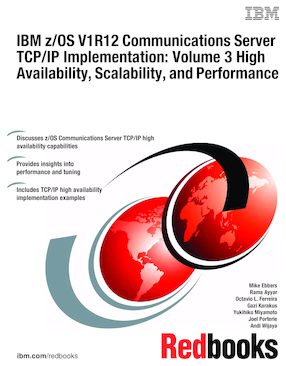Abstract
For more than 40 years, IBM® mainframes have supported an extraordinary portion of the world’s computing work, providing centralized corporate databases and mission-critical enterprise-wide applications. The IBM System z®, the latest generation of the IBM distinguished family of mainframe systems, has come a long way from its IBM System/360 heritage. Likewise, its IBM z/OS® operating system is far superior to its predecessors, providing, among many other capabilities, world-class, state-of-the-art, support for the TCP/IP Internet protocol suite.
TCP/IP is a large and evolving collection of communication protocols managed by the Internet Engineering Task Force (IETF), an open, volunteer organization. Because of its openness, the TCP/IP protocol suite has become the foundation for the set of technologies that form the basis of the Internet. The convergence of IBM mainframe capabilities with Internet technology, connectivity, and standards (particularly TCP/IP) is dramatically changing the face of information technology and driving requirements for ever more secure, scalable, and highly available mainframe TCP/IP implementations.
In this IBM Redbooks® publication, we begin with a discussion of Virtual IP Addressing (VIPA), a TCP/IP high-availability approach that was introduced by the z/OS Communications Server. We then show how to use VIPA for high availability, both with and without a dynamic routing protocol. We also discuss a number of different workload balancing approaches that you can use with the z/OS Communications Server. We also explain the optimized Sysplex Distributor intra-sysplex load balancing. This function represents improved multitier application support using optimized local connections together with weight values from extended Workload Manager (WLM) interfaces. Finally, we highlight the most important tuning parameters and suggest parameter values that we observed to maximize performance in many client installations.
Table of Contents
Chapter 1. An introduction to IBM z/OS Communications Server high availability technologies
Chapter 2. Virtual IP addressing
Chapter 3. VIPA without dynamic routing
Chapter 4. VIPA with dynamic routing
Chapter 5. Internal application workload balancing
Chapter 6. External application workload balancing
Chapter 7. Intra-sysplex workload balancing
Chapter 8. Performance and tuning
Appendix A. HiperSockets Multiple Write
Appendix B. Our implementation environment
